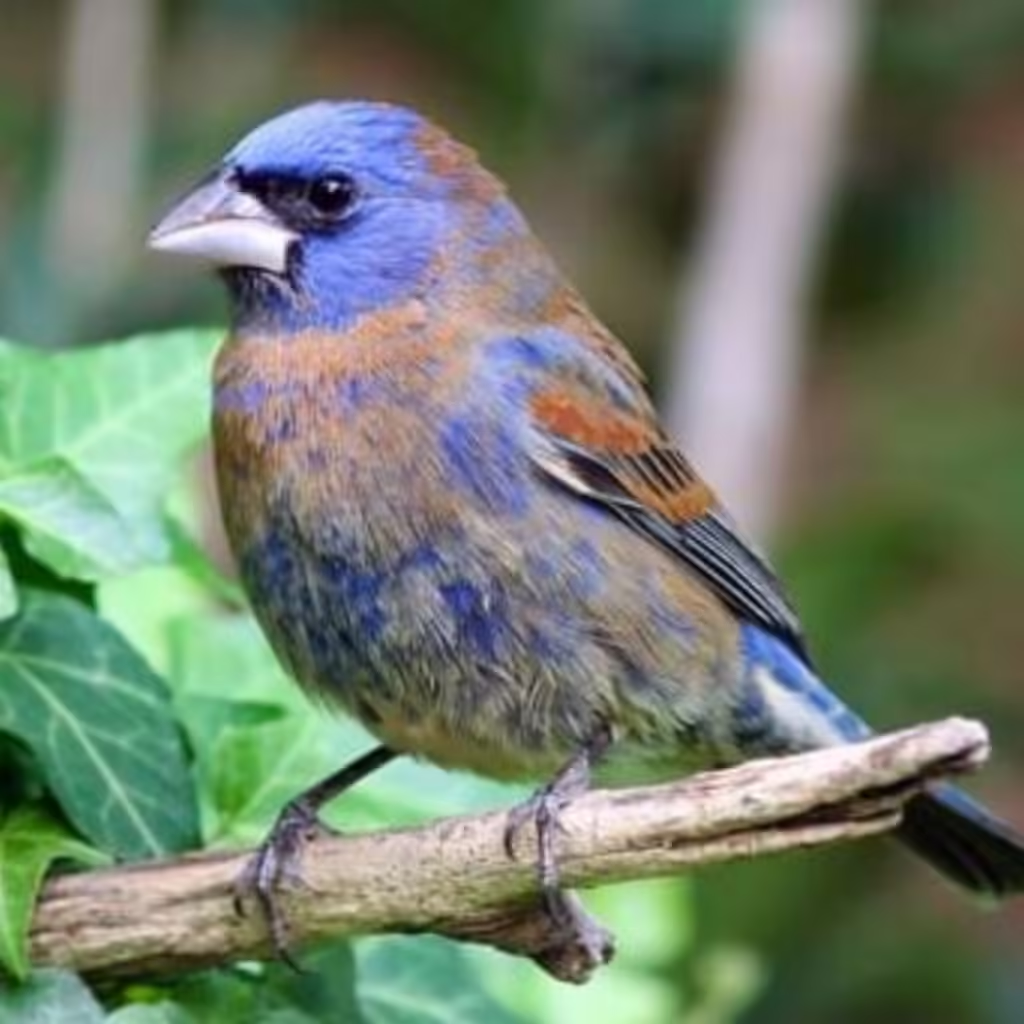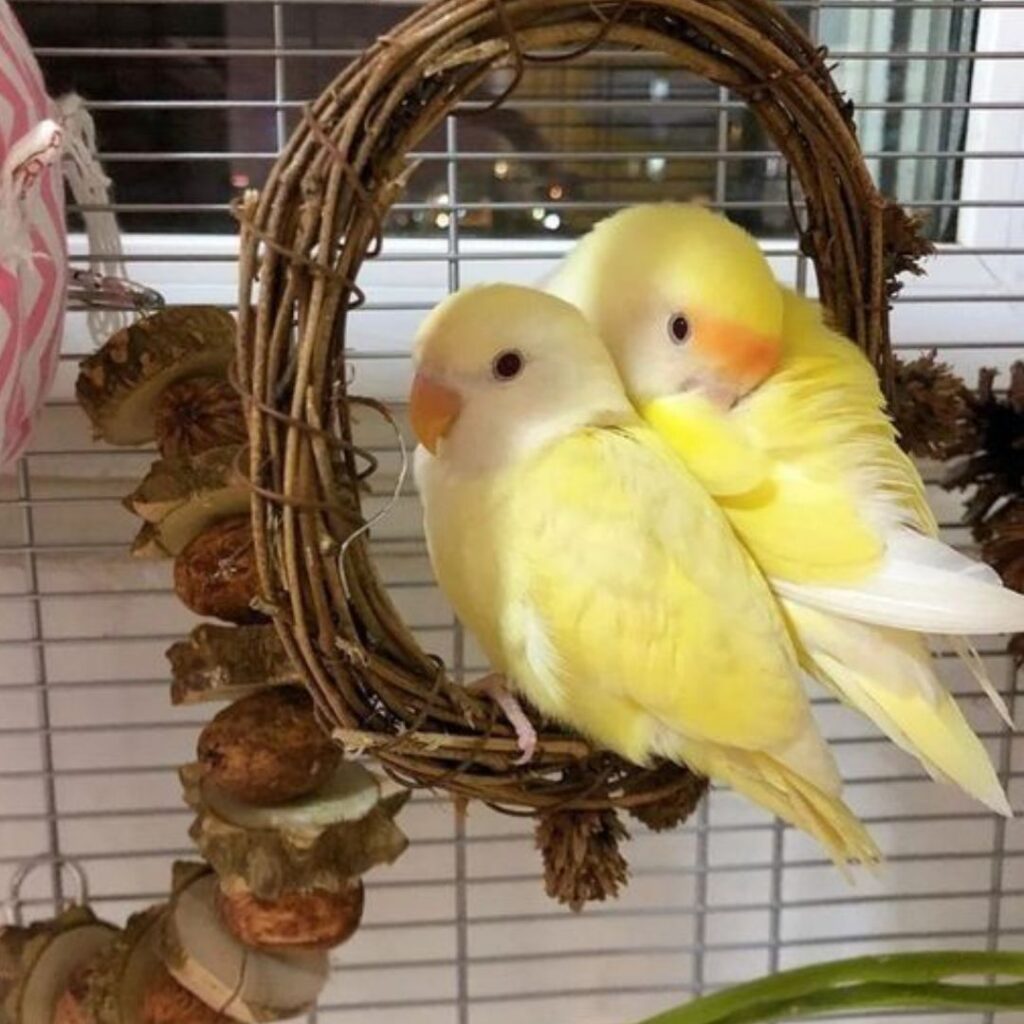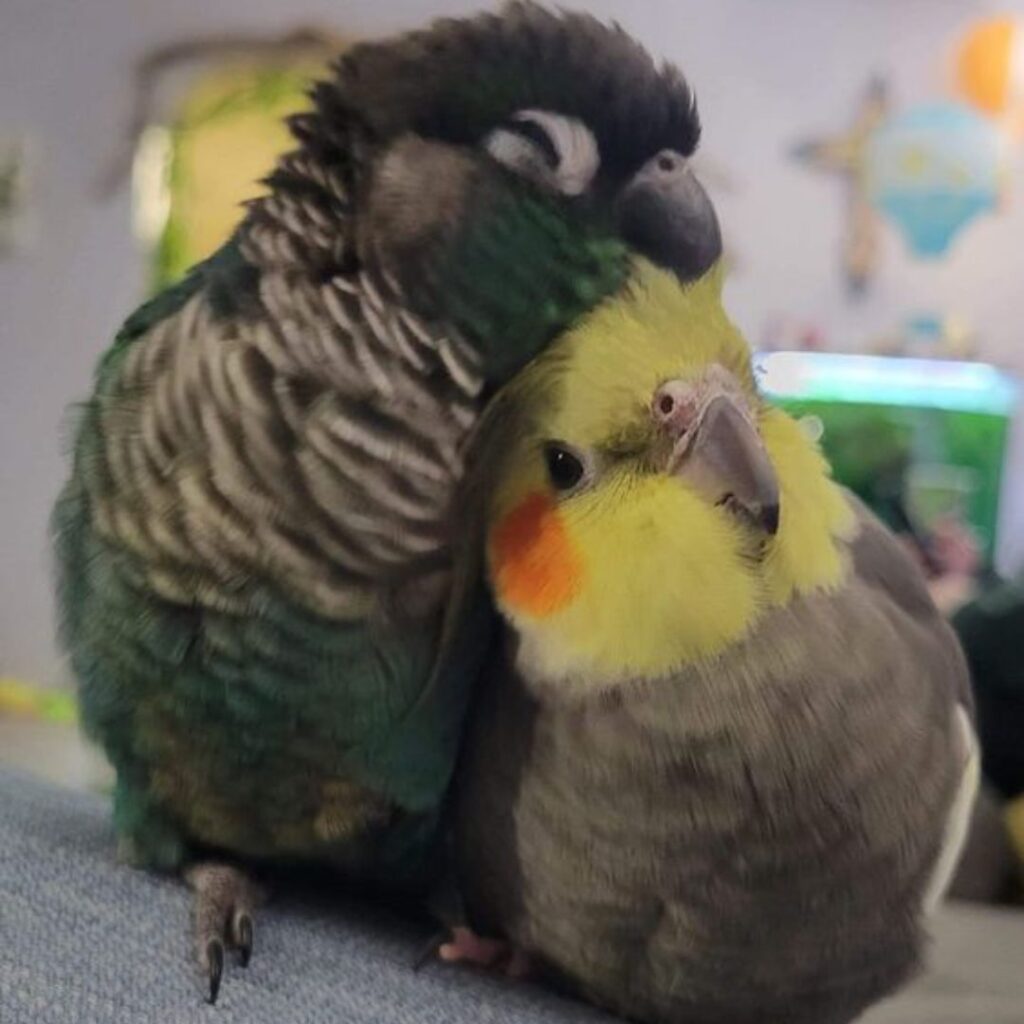
Blue Grosbeak vs Indigo Bunting: Birding is an interesting hobby that brings us closer to nature. Among the many beautiful birds one might encounter, the Blue Grosbeak and the Indigo Bunting are two striking species that often capture the interest of bird enthusiasts. Both birds, with their vivid blue plumage, can sometimes be challenging to distinguish. This guide aims to provide a comprehensive comparison between these two species, focusing on their physical characteristics, habitats, behaviors, and other key differences to help you identify and appreciate these birds more easily.
Also Read: Everything You Need to Know About Blue Grosbeak
Physical Characteristics of Blue Grosbeak
Appearance
The Blue Grosbeak (Passerina caerulea) is known for its vibrant blue color. Adult males are a deep blue with two prominent chestnut wing bars, while females and juveniles are mostly brown with subtle blue tinges. They have a robust, conical bill that is well-suited for cracking seeds. Blue Grosbeaks are larger than Indigo Buntings, measuring about 6.3 to 7.5 inches in length.

Size and Shape
Blue Grosbeaks are stocky birds with a large head and thick neck. Their stout build and large beak are distinctive features. The combination of their size and vivid coloring makes them relatively easy to spot when perched in their preferred habitats.
Physical Characteristics of Indigo Bunting
Appearance
The Indigo Bunting (Passerina cyanea) is smaller and more delicate than the Blue Grosbeak. Adult males are a bright, iridescent blue all over during the breeding season, whereas females and juveniles are brown with faint blue streaks. The males’ blue can appear almost black in certain lighting conditions.
Size and Shape
Indigo Buntings are smaller than Blue Grosbeaks, measuring around 4.7 to 5.1 inches in length. They have a more slender build with a smaller, conical bill. Their size and uniform blue coloring in males make them a delightful sight, especially when they are perched high and singing.

Habitat and Distribution
Blue Grosbeak Habitats
Blue Grosbeaks prefer dense, shrubby areas such as forest edges, thickets, and brushy fields. They are commonly found in the southern United States during the breeding season and migrate to Central America for the winter. These birds favor habitats that provide plenty of cover and foraging opportunities.
Indigo Bunting Habitats
Indigo Buntings are more widespread across North America, from the eastern United States to parts of Canada. They prefer open areas with scattered shrubs and trees, such as the edges of forests, roadsides, and fields. In the winter, they migrate to Central America and the Caribbean. They are often found in areas where they can easily find food and suitable perches for singing.

Behavioral Differences
Feeding Habits
Both species primarily feed on seeds, but their diets also include insects, especially during the breeding season. Blue Grosbeaks tend to forage on the ground or in low vegetation, while Indigo Buntings are more likely to be seen hopping through low bushes and trees.
Mating Rituals
During the breeding season, Blue Grosbeak males exhibit aggressive territorial behavior. They sing from high perches to attract females and defend their territory. Indigo Bunting males also sing to attract mates, but they are less aggressive and are often seen singing from exposed perches to maximize their visibility and audibility.

Songs and Calls
Blue Grosbeak Song
The song of the Blue Grosbeak is a rich, melodious warble that consists of a series of varied notes. It is often compared to the song of the Rose-breasted Grosbeak but is faster and less sweet. Their call is a distinctive metallic “chip,” which can be heard during flight or when foraging.
Indigo Bunting Song
The Indigo Bunting’s song is a lively series of high-pitched notes, described as a bright and cheerful warble. It is a repetitive song, with males sometimes singing continuously for extended periods. Their call is a sharp “chip” or “tsip,” useful for locating them in dense foliage.

Migration Patterns
Blue Grosbeak Migration
Blue Grosbeaks are long-distance migrants, traveling between their breeding grounds in the southern United States and their wintering grounds in Central America. Their migration routes often include stopovers in Mexico, where they rest and refuel before continuing their journey.
Indigo Bunting Migration
Indigo Buntings also undertake extensive migrations, breeding across North America and wintering in Central America and the Caribbean. These birds often migrate at night, using the stars to navigate. Their migrations involve crossing large bodies of water, making their journeys particularly challenging.

Birdwatching Tips
Best Times to Spot Each Bird
The best time to observe both species is during their breeding season, from late spring to early summer. Early mornings are ideal, as birds are most active then. Look for Blue Grosbeaks in dense shrubs and forest edges, while Indigo Buntings are more commonly found in open fields and along roadsides.
Equipment Recommendations
A good pair of binoculars is essential for birdwatching. A field guide to North American birds can help with identification. Consider carrying a notebook to record sightings and a camera with a zoom lens to capture clear images. Birdwatching apps can also provide helpful audio cues for recognizing their songs and calls.

Conservation Status
Current Conservation Status of Blue Grosbeak
Blue Grosbeaks are classified as of least concern, but their populations are monitored due to habitat loss. Conservation efforts focus on preserving their breeding and wintering habitats to ensure their populations remain stable.
Current Conservation Status of Indigo Bunting
Indigo Buntings are also listed as of least concern. However, they face threats from habitat destruction and climate change. Conservation initiatives aim to protect their habitats and ensure safe migration routes.

Common Confusions
Mistaken Identities
Blue Grosbeaks and Indigo Buntings can be confused with other blue birds, such as the Lazuli Bunting or the Eastern Bluebird. Paying attention to size, habitat, and specific markings can help avoid misidentification.
How to Avoid Misidentification
Using a combination of visual cues and songs is the best way to accurately identify these birds. Binoculars and field guides are invaluable tools for birdwatchers to make precise identifications.

Photographing These Birds
Tips for Capturing the Blue Grosbeak
To photograph Blue Grosbeaks, focus on their habitats in dense shrubs and thickets. Early morning light provides the best conditions for capturing their vibrant colors. Patience and a good zoom lens will help you get close-up shots without disturbing the birds.
Tips for Capturing the Indigo Bunting
Indigo Buntings are often found in open fields, making them easier to photograph. Look for them perched on high points where they sing and survey their territory. Early morning or late afternoon light will enhance the colors in your photos.

Role in the Ecosystem
Ecological Importance of Blue Grosbeak
Blue Grosbeaks play a vital role in controlling insect populations. They also help in seed dispersion, contributing to plant biodiversity. Their presence indicates a healthy ecosystem.
Ecological Importance of Indigo Bunting
Indigo Buntings aid in insect control and pollination. They are important for maintaining the balance in their habitats. Their vibrant presence adds to the ecological diversity.

Engaging in Ethical Birdwatching
Best Practices
Ethical birdwatching involves respecting bird habitats, maintaining a safe distance, and minimizing disturbances. Using established trails and observation points helps protect the environment and the birds.
Importance of Conservation Efforts
Supporting conservation organizations and participating in local birdwatching clubs can make a significant impact. These efforts help protect bird populations and their habitats for future generations, ensuring that species like the Blue Grosbeak and Indigo Bunting continue to thrive.

Conclusion – Blue Grosbeak vs Indigo Bunting
In summary, distinguishing between the Blue Grosbeak and the Indigo Bunting requires attention to their physical characteristics, habitats, and behaviors. By understanding these differences and following ethical birdwatching practices, you can enhance your birdwatching experience and contribute to the conservation of these beautiful birds.
Also Read: Everything You Need to Know About the Indigo Bunting (Blue Canary)
FAQs
What is the main difference between a Blue Grosbeak and an Indigo Bunting?
The main difference is their size and coloration. Blue Grosbeaks are larger with chestnut wing bars, while Indigo Buntings are smaller and uniformly blue.
Where can I find Blue Grosbeaks and Indigo Buntings?
Blue Grosbeaks prefer dense, shrubby areas, while Indigo Buntings are found in open fields and forest edges.
What do Blue Grosbeaks and Indigo Buntings eat?
Both birds primarily eat seeds and insects, especially during the breeding season.
How can I identify these birds by their songs?
Blue Grosbeaks have a rich, varied warble, while Indigo Buntings sing a lively, high-pitched series of paired notes.
Why is ethical birdwatching important?
Ethical birdwatching helps protect bird habitats and populations, ensuring their survival and the health of the ecosystem.
Pingback: The Purple Martin: Everything You Need to Know
Pingback: How to Attract Purple Martins to Your Backyard